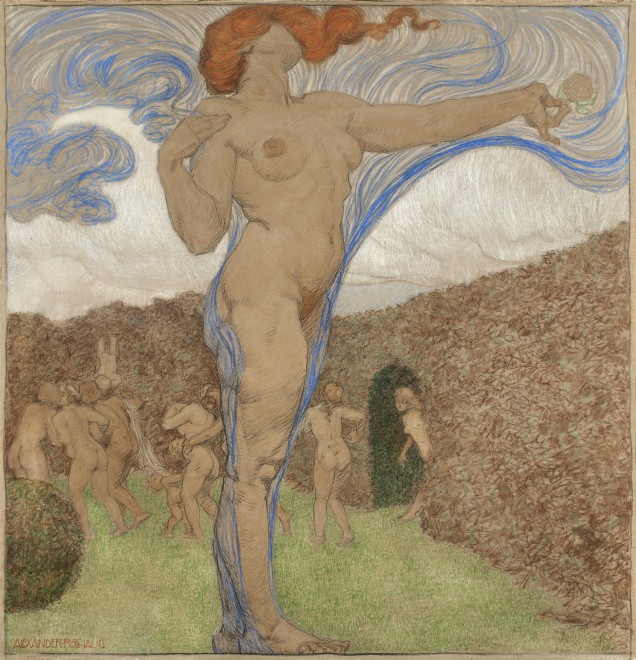Provenance
Private collection, Vienna
Alexander Rothaug was born in Vienna in 1870, and received his first painting
lessons from his father. In 1884 he began an apprenticeship as a sculptor with
Johann Schindler. Between 1885 and 1892 Rothaug studied at the Vienna
Academy under Franz Rumpler, Christian Griepenkerl, and the Orientalist
painter Leopold Carl Müller, under whom he studied until Müller’s death in
1892. He was awarded the Lampi Prize in 1888 and the Golden Füger Medal in
1889. With Müller he studied in the special school for history painting, and
received the 1890 Special School Award.
In 1892 Rothaug moved to Munich, attending the Academy there. In 1900, he
started to exhibit, and was also employed for several years as an illustrator for
the humorous German Journal Fliegende Blätter . In 1896 he married Ottilie
Lauterkorn and traveled to Dalmatia, Bosnia, Spain, Italy and Germany.
Around 1910 Rothaug moved back to Vienna and became a member of the
Vienna Künstlerhaus. In 1911 there was an extensive article about the artist in
the journal Art Revue . In 1913 he received the Drasche Prize. Rothaug died in
Vienna in 1946.
Inspired by Classical mythology and German Legends, Alexander Rothaug was
greatly influenced by the German Symbolist painter and sculptor Franz von
Stuck. Rather than a precisely defined movement, Symbolism was an artistic
current that found outlets in literature, painting and music. It is customary to
attribute its birth to the year 1886, when the French poet Jean Moréas published
his Manifeste , which contained a key phrase that described symbolism’s aims:
‘To clothe the Ideal in a form perceptible to the senses.’ In Brussels the same
year L’Art modern spread awareness of his premise and explained, ‘Nature seen
through temperament is the famous formula of naturalism. Temperament seen
through nature, and even without nature, must, it seems, be the formula of
innovators.’ In answer to the question of whether the Real or the Subjective
should be given precedence, the article added, ‘Symbolism replies: Nature
should only serve as an accessory to convey the dreams of the brain.’ The
placing of greater importance on the Ideal rather than the material is at the very
core of Symbolism.
The present work, once called “Aphrodite”, seems rather to depict Flora. In
Greek and Roman mythology Flora is the goddess of flowers and springtime.
One morning the goddess came upon the lifeless body of a woodland nymph.
Saddened by the innocent creature’s fate, Flora transformed the nymph’s body
into a flower. She called out to Zephyrus, her husband and keeper of the West
Wind, to blow away the clouds so that Apollo might allow the sun to cast down
its warming rays. To this, Aphrodite would add beauty, and Dionysus a nectar
of intoxicating aroma, while the three Graces further bestowed upon the blossom
the gifts of charm, joy, and splendor. All agreed that this new bloom was “The
Queen of Flowers.” Aphrodite named the flower Rose , dedicating it to her son,
Eros, the god of love.
Based on the format, the composition may have been a preparatory sketch for a
decorative program featuring the four winds. A number of Rothaug’s decorative
cycles employ panels, most notably that in the Nibelungenlounge at the Grand
Hotel de l’Europe in Bad Gastein. Completed in the 1920s, it features 12 large
nearly square painted panels. Recently, a smaller panel Boreas and Oreithyia
appeared on the art market (fig. 1). It is of a similar proportion to our drawing
and the female figure, Oreithyia, the object of Boreas’ unwelcome advances,
also has red, windswept hair and is partly enveloped in billowing drapes. The
two designs could, conceivably, have been part of the same decorative program.
